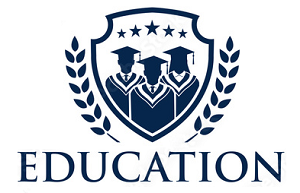
Understanding the Limits on Private Student Loan Amounts: Is There a Limit?
Decoding the World of Private Student Loans: What You Need to Know
The Basics of Private Student Loans: A Quick Overview
Private student loans are financing options provided by private institutions such as banks, credit unions, and other financial entities. Unlike federal student loans, which are backed by the government, private loans operate under the terms determined by the lender. Borrowers often turn to private loans to cover the gap between federal student loans and the total cost of education, as these funds can be utilized for tuition, fees, books, and even living expenses. One of the notable characteristics of private student loans is the variability in interest rates, repayment terms, and eligibility requirements, which can vary widely from one lender to another.
How Do Private Student Loans Differ from Federal Loans?
Understanding the distinction between private and federal student loans is crucial for borrowers. Federal loans generally offer fixed interest rates, flexible repayment options, and benefits such as deferment or forbearance during financial hardships, as well as potential loan forgiveness programs. In contrast, private loans often come with variable interest rates, which can be significantly higher depending on market conditions and the borrower’s credit profile. Additionally, private lenders may impose stricter credit requirements, making these loans less accessible to borrowers with limited or poor credit histories. Therefore, it is essential for students to weigh these differences when considering their funding options and explore all avenues of federal financial aid before turning to private loans.
Who Are the Major Players in the Private Student Loan Market?
The private student loan market comprises a variety of lenders, each with distinct offerings and borrowing criteria. Major banks like Wells Fargo and Citibank, as well as online lenders such as SoFi and Earnest, have carved out significant parts of the market share. These institutions actively market their loans as flexible solutions for funding higher education expenses. Additionally, specialized lenders such as College Avenue and Purefy focus exclusively on student loans, often providing tailored financing strategies for college students and graduates. It’s imperative for borrowers to conduct thorough comparisons of rates, repayment options, and other terms to find a lender that best fits their financial situation and educational goals.
Unpacking Loan Limits: What Are the Criteria?
Understanding Borrowing Limits Set by Lenders
Is there a limit for private student loan amounts? Loan limits for private student loans are primarily defined by the lender’s policies and the borrower’s financial profile. Some lenders may impose a maximum borrowing limit, which can range from a few thousand dollars to the total cost of attendance, depending on the program and institution. For instance, a lender might allow borrowers to take out loans up to the full cost of their education, minus any financial aid received. While private loans can often cover most or all educational expenses, the actual amount a borrower can secure depends heavily on factors such as income, existing debt obligations, and creditworthiness.
Factors Influencing Your Eligibility for Higher Loan Amounts
Several critical factors play into a borrower’s eligibility for higher loan amounts in the realm of private student loans. Credit history is one of the most significant influencing factors, as lenders assess a borrower’s credit score and report to determine their risk level. Higher credit scores generally lead to better loan terms, including higher borrowing limits and lower interest rates. Additionally, income, both current and projected, plays a vital role; if a borrower has a steady income and a strong potential for future earnings, lenders may be more willing to approve a larger loan. Furthermore, the type of program (graduate vs. undergraduate) also impacts loan limits, as graduate programs often lead to larger loans due to higher tuition costs and the financial profile of graduate students.
The Role of Credit Scores in Determining Loan Limits
Credit scores are pivotal in determining the amount of private student loans a borrower can access. These scores—ranging from 300 to 850—reflect a person’s creditworthiness based on their borrowing history, including payment patterns, outstanding debts, and credit usage. Lenders typically require a minimum score to qualify for any loan, but applicants with scores in the higher ranges can not only access higher limits but also enjoy lower interest rates and better terms overall. Moreover, many lenders offer prequalification checks that allow potential borrowers to estimate the loan amount and terms they may qualify for without significantly impacting their credit score. This process can be crucial as it gives students a clearer understanding of their financial standing and potential loan options.
So, What’s the Average Amount You Can Borrow?
The Typical Range of Private Student Loan Amounts
The typical amount borrowers can secure through private student loans varies widely, often depending on individual financial needs, the cost of attendance at the chosen institution, and the lender’s policies. Generally, borrowers can expect to access amounts ranging from $1,000 to $100,000 or more. Undergraduate students may often borrow between $5,000 and $25,000 per academic year, while graduate school students might find themselves eligible for loan amounts as high as $50,000 to $100,000 for the duration of their programs. However, it is important to remember that taking out loans should be based on actual needs rather than the maximum limits available, to ensure sustainable repayment post-graduation.
Special Programs and Their Impact on Borrowing Potential
Some financial institutions offer specialized programs that may enhance borrowing potential. These include scholarships, grants, and institutional loans that may reduce the overall amount needed from private loans. Additionally, some lenders have specific products targeting particular fields such as healthcare, STEM, and education, which may offer more favorable terms and higher limits based on anticipated career earnings in these sectors. Understanding these specialized options can allow students to make informed financial decisions and potentially maximize their educational investments while minimizing their reliance on private loans.
An In-Depth Look at Borrowing Trends Over the Years
The landscape of private student loans has evolved significantly over the past decade, propelled by fluctuating interest rates, economic conditions, and changing educational costs. Industry analyses indicate a marked increase in private student loan borrowing as educational institutions raise tuition fees. Data from the College Board reflects that from 2015 to 2022, the average tuition and fees for public four-year institutions increased by a staggering 33%, nudging students to seek private loans more aggressively. Additionally, as economic conditions fluctuate, more banks and private lenders have entered the market, creating an increasingly competitive environment and urging lenders to offer more favorable terms to attract borrowers. Understanding these trends not only helps prospective students gauge the current financial climate but also highlight potential future challenges in student loan borrowing.
Navigating the Loan Process: Tips for Managing Your Debt
Best Practices for Applying for Private Student Loans
Applying for private student loans can feel overwhelming, yet by following best practices, students can simplify the process. First and foremost, conduct comprehensive research on multiple lenders to compare interest rates, terms, and borrower benefits. Creating a personal checklist that outlines documentation requirements—including proof of income, credit history, and information about the school attending—can streamline the application process. Additionally, prequalifying with a few lenders can provide borrowers a clearer picture of their potential options without impacting their credit scores. Finally, consider applying with a creditworthy co-signer who can improve the chances of approval and potentially unlock better loan terms.
Strategies to Decide How Much to Borrow: Needs vs. Wants
Determining the appropriate amount to borrow involves a careful consideration of both needs and wants. A clear budget that outlines expected expenses—such as tuition, textbooks, and living costs—can help students identify their actual financial requirements. When compiling this budget, it is vital to account for potential income during school, such as part-time jobs or work-study programs, which can offset borrowing needs. Moreover, students should consider their post-graduation career trajectories and the potential return on investment related to their field of study to avoid borrowing more than necessary. A crucial strategy is to take out only what is required, lessening future financial burdens and easing the path towards repayment.
Long-Term Considerations: Repayment Plans and Financial Health
Beyond simply securing loans, borrowers must consider how they will manage repayment after graduation. Understanding the various repayment plans available—such as standard, graduated, or income-driven repayment options—is crucial in planning for long-term financial health. Analyzing one’s budget and lifestyle choices to account for student loan repayment is essential; students should consider using budgeting apps or financial planners. Furthermore, awareness of potential loan forgiveness programs, consolidation options, and refinancing opportunities post-graduation can create a more comprehensive strategy for managing student loan debt. Faced with daunting student loan balances, being proactive about developing a financial strategy promotes a healthier financial future for borrowers.





